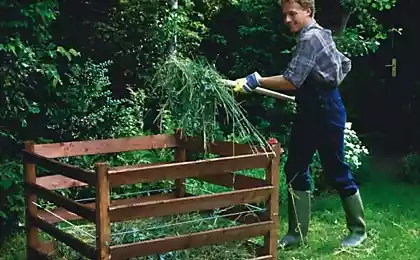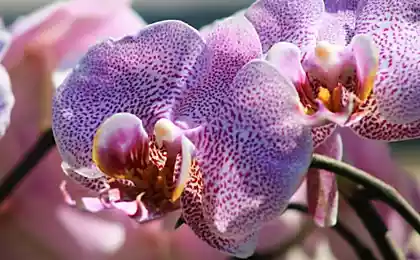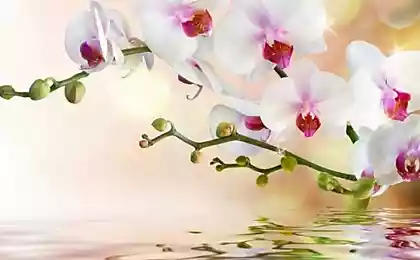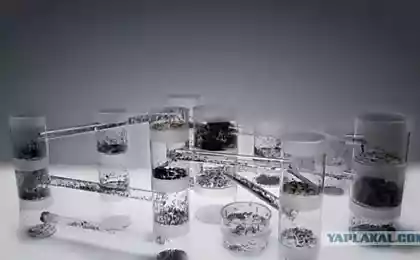212
Orchids will live for decades if fed garlic and reproduced properly.
Orchids are whimsical plants, but truly beautiful. Despite all the difficulties in leaving, they find their owners and show off on the windowsill. Sometimes people are so fond of caring for orchids that they are able to allocate a whole balcony in a small apartment for the seedlings of this royal flower. Today's edition. "Site" It will tell you how to reproduce an orchid in unusual ways and increase the beauty in the house or share sprouts with friends and relatives.
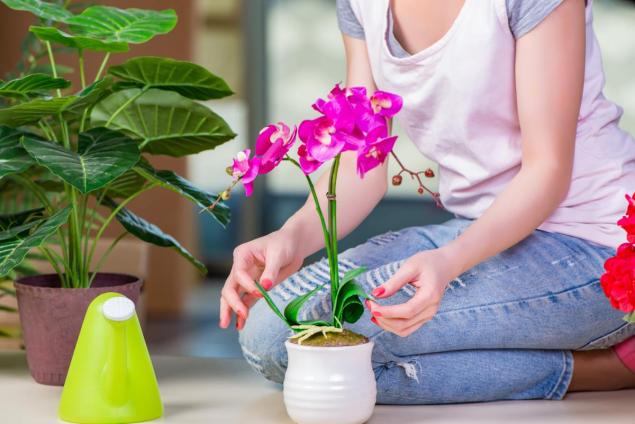
Tropical beauty is very viable due to the developed root system. But it should not be transplanted in winter. It is better to wait for the end of the abundant flowering phase and transplant in the spring. It is necessary to multiply the orchid at 29 degrees of heat, with air humidity not higher than 70%.

You can reproduce orchids that are 2 years old. If the plant is healthy, strong and has not been eaten by pests, it is possible to try to reproduce. Take a good look at the plant you are going to breed. The orchid should not have mucus, bugs, and the leaves should be green. The rest is a contraindication to reproduction. You can end up without a flower.
There are 5 classic ways to breed orchids. The vegetative method is suitable for orchids that have grown out of their pot. Then you can free the flower from the fetters and cut the roots so that about 3 bulbs remain on each piece. In order for the seedlings to be well rooted, they must be dipped into the coal powder with a cut and placed in the ground. The first 3 days you need to spray the leaves, but do not water the seedlings.

Reproduction with cuttings is not suitable for all types of orchids. For seedlings, lateral shoots of the plant are used, which are cut into several parts. The cuttings are then placed in wet ground and create greenhouse conditions with a lid or plastic bag. After a day, the cuttings are watered. You can transplant cuttings when they reach 4 cm in length.
about:blank
Flowered flowers can also be reproduced. They are cut so that each piece has one kidney. Flowers are rooted in containers with settled water. And if the orchid developed children, they are also suitable for reproduction. Orchid seeds breed very patient people. This is the most time-consuming process. And if you are looking for easy unusual ways to reproduce an orchid, then there are such.
45049.300
Unusual ways of rooting orchid Potatoes From orchids you can tear off the leaf and transplant it in potatoes with a cut. In the root vegetable there is starch and moisture, which contribute to rooting. And if the potatoes are coated with moss on all sides, then the flower will take root in two weeks. In potatoes successfully root different plants. And the flowernose can be placed in a sponge that lies half in water. The flower will get the necessary moisture and will soon take root.
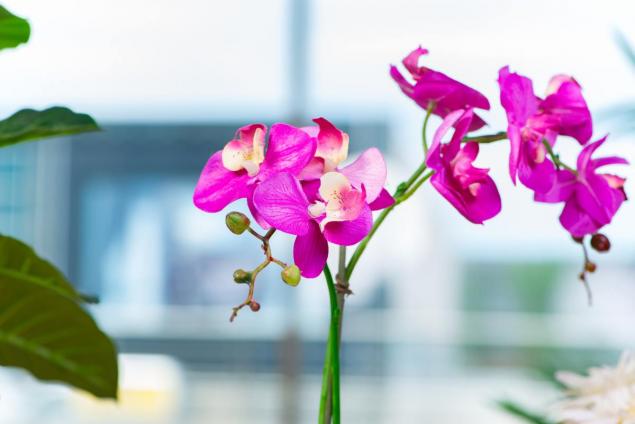
Banana is an ideal breeding ground for seedlings and rooting. Banana is often made of fertilizers for domestic plants, so that orchid cuttings can be safely stuck in the pulp of a banana and coat it with moss sphagnum for 14-20 days. Then you need to transplant the orchid into the soil.
A piece of cutting can be treated with molten wax. Better to use beeswax. Then you need to place the flower plant in a small container with moss and tighten the whole business with food film, from time to time spraying the plant and airing it.
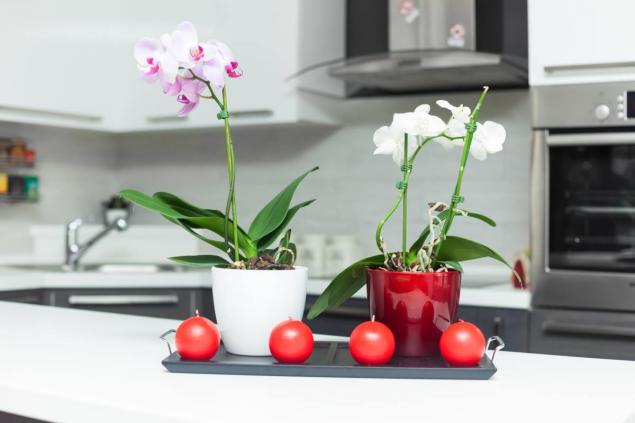
A good idea at the same time for breeding orchids and interior decoration. For this method, you will need a log, peduncle, strong thread and moss. Dip the flowernoses in coal and tie each piece to a log. On all sides, cover the peduncle with moss or coconut fiber. Periodically, this design should be sprayed with water.

The process of transplantation and reproduction of orchids is a meditative occupation that requires full dedication and attention. When you see that all the work was in vain and new roots appear from the flower tree, you understand that everything is not in vain. As you can see, you can reproduce an orchid in different ways, and sometimes you can approach the process creatively and even introduce seedlings into the interior design. How do you breed orchids?

Tropical beauty is very viable due to the developed root system. But it should not be transplanted in winter. It is better to wait for the end of the abundant flowering phase and transplant in the spring. It is necessary to multiply the orchid at 29 degrees of heat, with air humidity not higher than 70%.

You can reproduce orchids that are 2 years old. If the plant is healthy, strong and has not been eaten by pests, it is possible to try to reproduce. Take a good look at the plant you are going to breed. The orchid should not have mucus, bugs, and the leaves should be green. The rest is a contraindication to reproduction. You can end up without a flower.
There are 5 classic ways to breed orchids. The vegetative method is suitable for orchids that have grown out of their pot. Then you can free the flower from the fetters and cut the roots so that about 3 bulbs remain on each piece. In order for the seedlings to be well rooted, they must be dipped into the coal powder with a cut and placed in the ground. The first 3 days you need to spray the leaves, but do not water the seedlings.

Reproduction with cuttings is not suitable for all types of orchids. For seedlings, lateral shoots of the plant are used, which are cut into several parts. The cuttings are then placed in wet ground and create greenhouse conditions with a lid or plastic bag. After a day, the cuttings are watered. You can transplant cuttings when they reach 4 cm in length.
about:blank
Flowered flowers can also be reproduced. They are cut so that each piece has one kidney. Flowers are rooted in containers with settled water. And if the orchid developed children, they are also suitable for reproduction. Orchid seeds breed very patient people. This is the most time-consuming process. And if you are looking for easy unusual ways to reproduce an orchid, then there are such.
45049.300
Unusual ways of rooting orchid Potatoes From orchids you can tear off the leaf and transplant it in potatoes with a cut. In the root vegetable there is starch and moisture, which contribute to rooting. And if the potatoes are coated with moss on all sides, then the flower will take root in two weeks. In potatoes successfully root different plants. And the flowernose can be placed in a sponge that lies half in water. The flower will get the necessary moisture and will soon take root.

Banana is an ideal breeding ground for seedlings and rooting. Banana is often made of fertilizers for domestic plants, so that orchid cuttings can be safely stuck in the pulp of a banana and coat it with moss sphagnum for 14-20 days. Then you need to transplant the orchid into the soil.
A piece of cutting can be treated with molten wax. Better to use beeswax. Then you need to place the flower plant in a small container with moss and tighten the whole business with food film, from time to time spraying the plant and airing it.

A good idea at the same time for breeding orchids and interior decoration. For this method, you will need a log, peduncle, strong thread and moss. Dip the flowernoses in coal and tie each piece to a log. On all sides, cover the peduncle with moss or coconut fiber. Periodically, this design should be sprayed with water.

The process of transplantation and reproduction of orchids is a meditative occupation that requires full dedication and attention. When you see that all the work was in vain and new roots appear from the flower tree, you understand that everything is not in vain. As you can see, you can reproduce an orchid in different ways, and sometimes you can approach the process creatively and even introduce seedlings into the interior design. How do you breed orchids?
Elementary way of cooking any fish without oil, even the pan will not have to stain.
Why we need tears and why we can never stop crying

